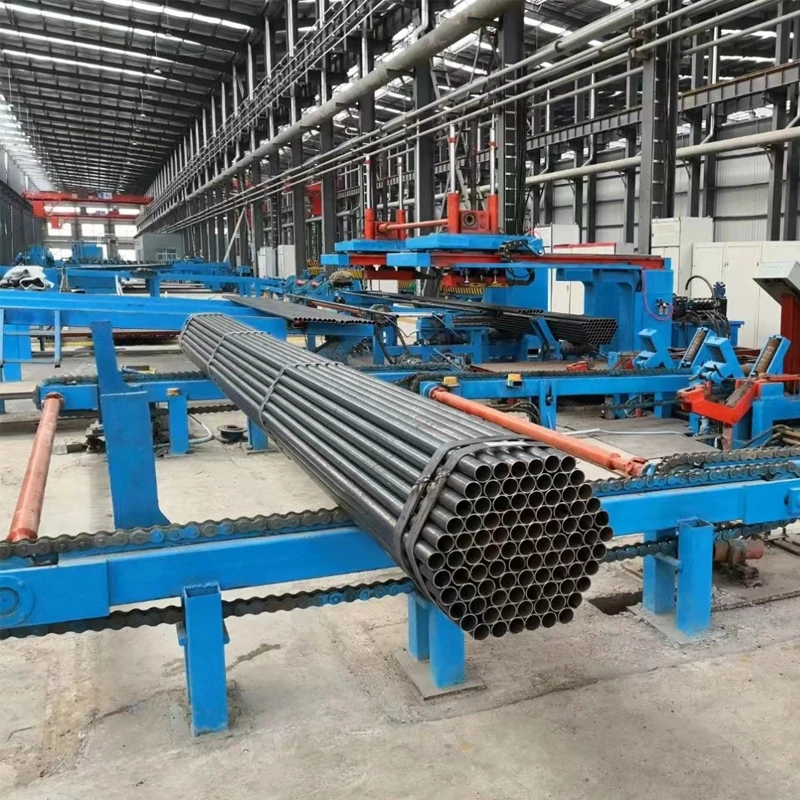uncoiler parts
The Role and Importance of Uncoiler Parts in Metal Processing
In the realm of metal processing, uncoilers play a critical role in ensuring efficiency and precision during the handling and transformation of coils of metal. Uncoilers are essential machinery in various industries, including automotive, construction, and manufacturing. To understand their significance, it is important to delve into the various components that make up an uncoiler and how each part contributes to the overall functionality of the system.
What is an Uncoiler?
An uncoiler is a device designed to unwind coils of material, most commonly metal sheets, in a controlled manner. This process is crucial for further processing steps, such as cutting, bending, or shaping metals into finished products. The uncoiler ensures that the metal is fed smoothly into the production line without causing damage or introducing defects.
Key Components of Uncoiler Parts
1. Mandrel The mandrel is the core component of an uncoiler. It is a cylindrical shaft onto which the rolled coil is placed. The mandrel's design allows for adjustments in diameter to accommodate various coil sizes. A properly functioning mandrel is vital for maintaining tension and ensuring that the coil unwinds smoothly.
2. Drive System The drive system controls the uncoiling process. It can be powered by electric or hydraulic motors, providing the necessary torque to rotate the mandrel and release the coil. The drive system is crucial for managing the unwinding speed and maintaining a consistent feed rate into production.
uncoiler parts

3. Support Arms These are adjustable arms that hold the coil in place and support its weight during the uncoiling process. Properly aligned support arms prevent sluggish unwinding, which can lead to tangles and misalignment. The support arms also help in stabilizing the coil, ensuring that it unwinds uniformly.
4. Tension Control System Maintaining the correct tension on the coil is essential to avoid damage and ensure smooth operation. The tension control system utilizes feedback mechanisms to adjust the grip on the coil as it unwinds. This system helps to prevent issues such as coil collapsing or coil jump, which can interrupt production and lead to costly downtime.
5. Braking System The uncoiling process generates momentum, making it essential to have a reliable braking system. The brakes are responsible for slowing down or stopping the coil's movement when necessary. This feature not only enhances safety but also contributes to the precision of material handling.
6. Sensors and Controls Modern uncoilers are equipped with advanced sensors and control systems that monitor the uncoiling process in real-time. These sensors can detect variations in speed, tension, and alignment, enabling automatic adjustments to maintain optimal performance. Control panels allow operators to set parameters, monitor progress, and troubleshoot any issues that arise during production.
Conclusion
The efficiency of an uncoiler is significantly influenced by the quality and functionality of its parts. Each component, from the mandrel to the tension control system, plays an integral role in facilitating the uncoiling process. As industries continue to evolve and demand higher precision and efficiency in metal processing, investing in high-quality uncoiler parts becomes imperative.
In conclusion, understanding the various parts of an uncoiler and their functions can provide insights into optimizing production lines and enhancing the overall productivity of metal processing operations. Whether in small-scale fabrication shops or large manufacturing facilities, uncoilers remain a cornerstone of effective materials handling, affirming their indispensable role in modern industry.
-
High Frequency Straight Seam Welded Pipe Production Line-BzZhou Xinghua Machinery Equipment Manufacturing Co., LTD.|line pipe steel&welded gas pipeNewsJul.30,2025
-
High Frequency Straight Seam Welded Pipe Production Line-BzZhou Xinghua Machinery Equipment Manufacturing Co., LTD.|High Precision&Automated SolutionsNewsJul.30,2025
-
High Frequency Straight Seam Welded Pipe Production Line - BzZhou Xinghua Machinery Equipment Manufacturing Co., Ltd.NewsJul.30,2025
-
High Frequency Straight Seam Welded Pipe Production Line-BzZhou Xinghua Machinery Equipment Manufacturing Co., LTD.|Precision Welding, High EfficiencyNewsJul.30,2025
-
High Frequency Straight Seam Welded Pipe Production Line|BzZhou Xinghua|Precision Welding&EfficiencyNewsJul.30,2025
-
High Frequency Straight Seam Welded Pipe Production Line - BzZhou Xinghua|Precision Engineering&EfficiencyNewsJul.30,2025


